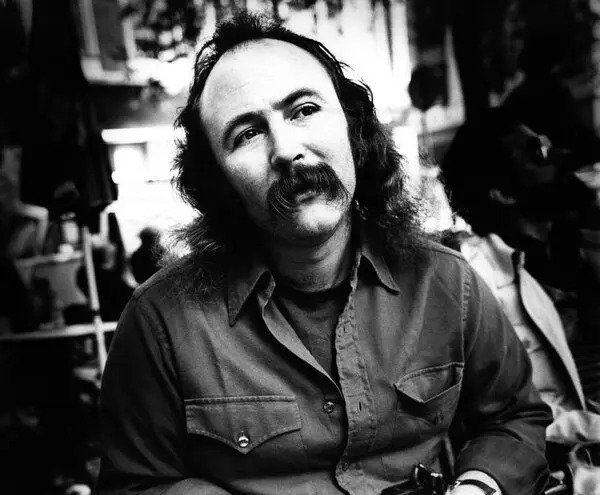Even Jessica Fletcher and Sigmund Freud’s love child was unable to fully understand David Crosby’s true nature. His songs were often musically conceived while backstage in a Dallas nightclub, where Crosby was freebasing cocaine with a propane tank in one hand, a brown bottle in the other, and a.45-caliber semiautomatic in his back pocket. He was a meek songbird who wrote some of the most beautiful tunes that human ears have ever feasted upon.
It was difficult for him to reconcile his own musical preferences as the contrasting background to his frequently misguided days. But despite all the highs and lows in his life and work, he never lost his affection for the peaceful people his idol had fostered. After their brief courtship during the early stages of Joni Mitchell’s career, Crosby continued to talk about their relationship. But he was very modest when he thought back to the influence he had on her while he was producing her first record.
The Byrds guy said as much in a Rolling Stone interview, “The strongest thing I did for Joni as a producer on Song to a Seagull, from 1968, was keep everybody else off of that record. She was a folkie who had learned to play what they call an indicated arrangement.”
He continued, “Where you are like a band in the way you approach a chord and string the melody along. She was so new and fresh with how she approached it. It’s the reason I fell in love with her music. She was a fantastic rhythm player and growing so fast. She had mastered the idea that she could tune the guitar any way she wanted, to get other inversions of the chords. I was doing that too, but she went further.”
He also seemed to be elevating her above everyone else when he praised her breakthrough song from 1971, Blue. Joni went out with Leonard Cohen, Jackson Browne, Graham Nash, James Taylor, and me. We all adored her for being wild, impulsive, and entertaining, but I don’t think she was ever content. She had experienced polio, Chuck Mitchell’s marriage, and the loss of a child; music served as her means of coping with all of this, he told the Guardian.
And no words have ever been spoken more genuinely. Actually, on Blue, she not only talked about her mental struggles but also showcased her entire range of skill and distinctive style of guitar playing—a style that was greatly impacted by her sickness as a youngster. Due to her polio experience, she was able to learn how to play despite having a weaker left hand due to Pete Seeger’s songbook. She had to use creativity to get around this by experimenting with tunings.
She explained, “When I play the guitar, I hear it as an orchestra: the top three strings being horn section, the bottom three being cello, viola, and bass—the bass being indicated but not rooted.”
This lends her playing a lot of depth and an unconventional harmonic technique that lets her create a lilting spectrum of beauty in her songs that is reminiscent of the same yin and yang of civilization and nature that is a fundamental component of her songwriting. which both grow to produce the devastating Blue.
Crosby concluded, “Bob Dylan’s as good a poet as Joni, but nowhere near as good a musician. Paul Simon and James Taylor made some stunners – but for me, Blue is the best singer-songwriter album. Picking a song from it is like choosing between your children. Can you imagine a better song than ‘A Case of You’? She was so brilliant as a songwriter, it crushed me. But she gives us all something to strive for.”
